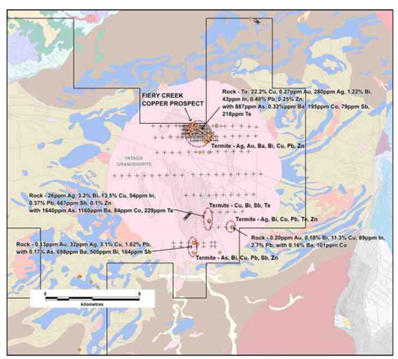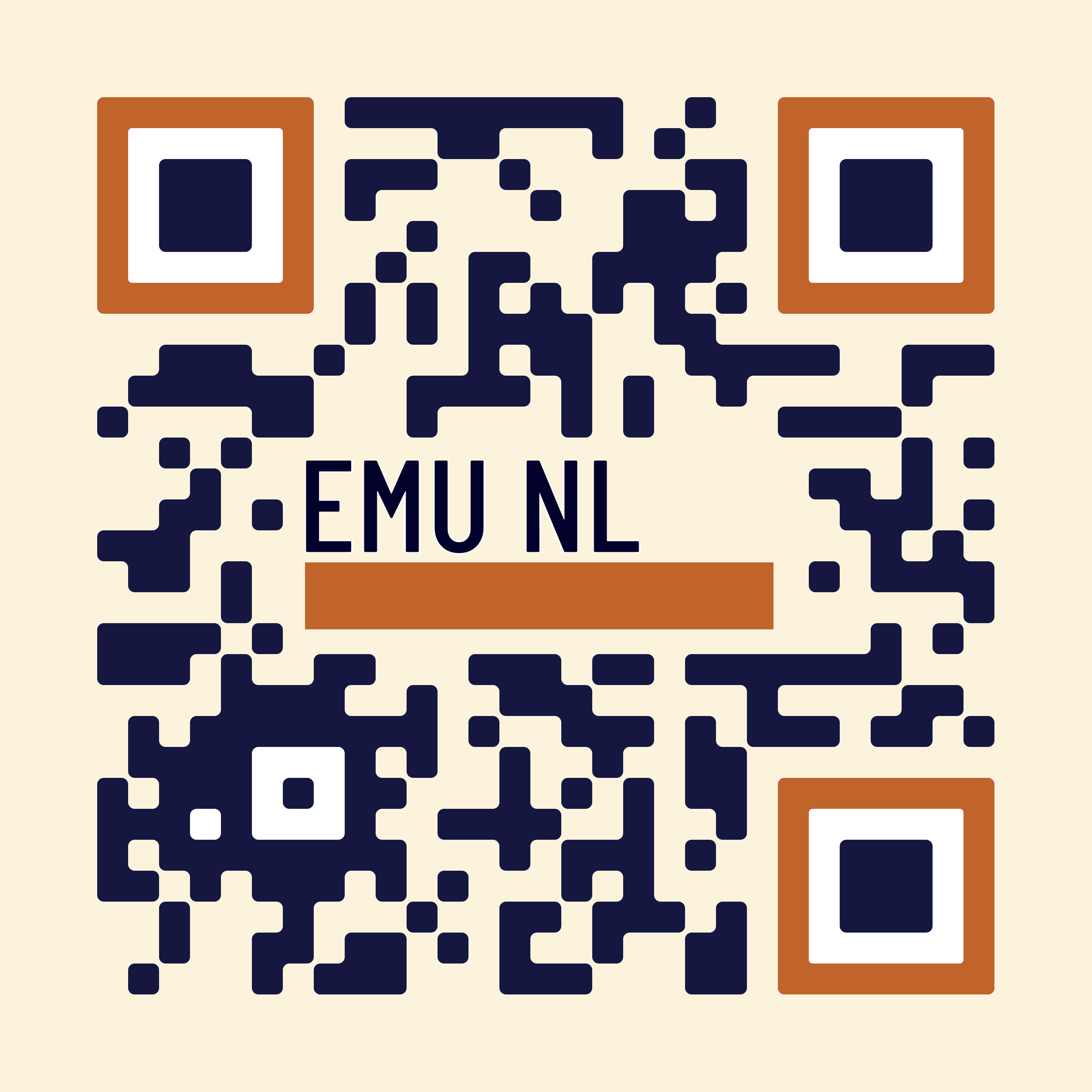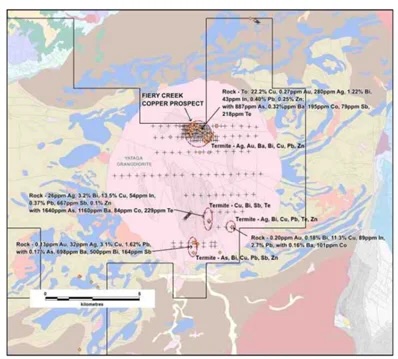EMU NL (ASX: EMU) (“EMU” or “the Company”) is pleased to provide an exploration update on the Georgetown Project in Queensland where the Company has extended a geochemistry program to further investigate potential it has identified for a copper porphyry discovery.
Highlights
- High grade copper veins have developed adjacent to a copper porphyry system at Fiery Creek prospect, within the Georgetown Project in Queensland
- High-grade copper assays of up to 23.5% Cu
- Mineralogy review strongly supports the presence of a shallow, constrained significant copper mineralised porphyry system
- Geochemistry favourably compares to similar geologically aged projects including Mount Leyshon, Kidston, Red Dome and nearby Mt Turner
- Copper mineralised zone of the Fiery Creek porphyry system is interpreted to lie close to surface
- Outcropping vein areas indicative of pencil porphyry type systems as documented at North Parkes and Ridgeway, NSW
- Extended geochemistry sampling program underway at Fiery Creek with planned detailed geologic mapping activity
- Geophysics survey (pole dipole, IP, resistivity, MT) scheduled for August 2024
Emu Non-Executive Chairman Peter Thomas commented,
“Emu is increasingly confident the Fiery Creek prospect has the makings of a massive multi- million-tonne copper porphyry system. In addition to Mr Maund’s assessment, the results of our geochemistry work to date at Fiery Creek have confirmed the potential for a near-surface, high- grade deposit which warrants further investigation. Emu intends to strengthen its understanding of this discovery in 2024 by applying modern exploration techniques not previously used in the area. This includes the next key step for the Company which is to undertake a definitive geophysical survey of the Fiery Creek Prospect area in August this year.”
Emu has contracted Independent Consulting Economic Geologist and Fellow of the AusIMM and AIG, Mr Nigel Maund, to assess the Company’s Fiery Creek prospect, within the Georgeotwn Project.
The scope of Mr Maund’s assessment includes:
- a comprehensive mineralogical investigation of the Fiery Creek vein samples1,
- review of EMU exploration data, and
- an update to his interim report2.
In his interim report, Mr Maund suggested the Fiery Creek quartz, copper oxide, sulphide vein array system appears to be developed within the cupolas of two possible, closely spaced “pencil porphyry – type” mineralised systems.
Further research work undertaken by Mr Maund, relying on the updated EMU geologic exploration database, has strengthened his view and interpretation of the system. Indeed, evidence of feldspar porphyry intrusive bodies and phreatic breccias and advanced argillic alteration have been confirmed from Fiery Creek samples viewed under microscope.

Figure 1. Fiery Creek Copper/Yataga Granodiorite summarising rock (brown diamonds) and termite mound sample results (black crosses)
Fiery Creek Geochemistry Suggests Shallow Copper Mineralisation
Substantial high-grade copper assays of up to 23.5% Cu were recorded with anomalous associated elements: bismuth (up to 1.88%), silver (up to 480 g/t), arsenic (up to 1,650 ppm), antimony (up to 667 ppm), zinc (up to 1,470 ppm), barium (up to 1.25 %) and tellurium (up to 215 ppm). Mr Maund noted that the system is copper dominated with significant bismuth and silver. Referencing Dr Scott Halley’s3 work, Mr Maund noted the level of erosion within a porphyry copper system can be pinpointed by its geochemical footprint and its silicate and sulphide mineralogy. See Figures 2 and 3 below. These diagrams illustrate that the Fiery Creek system is likely to have been eroded to the upper potassic alteration shell of a porphyry copper system with high grade copper impregnated veining currently exposed to surface.


